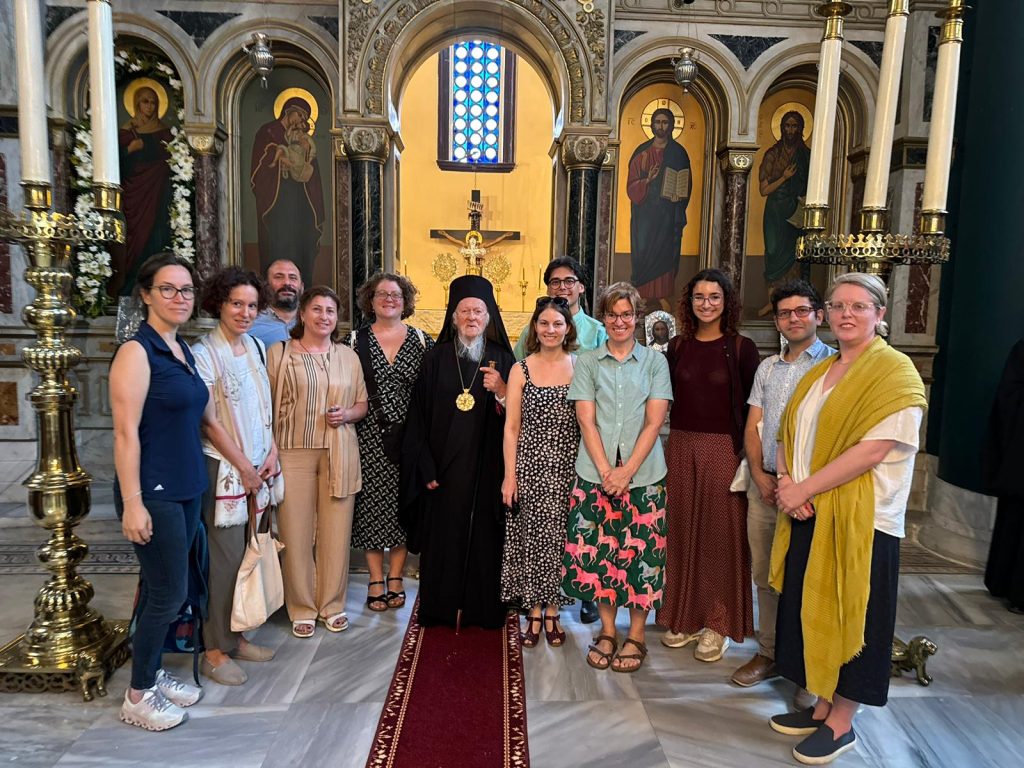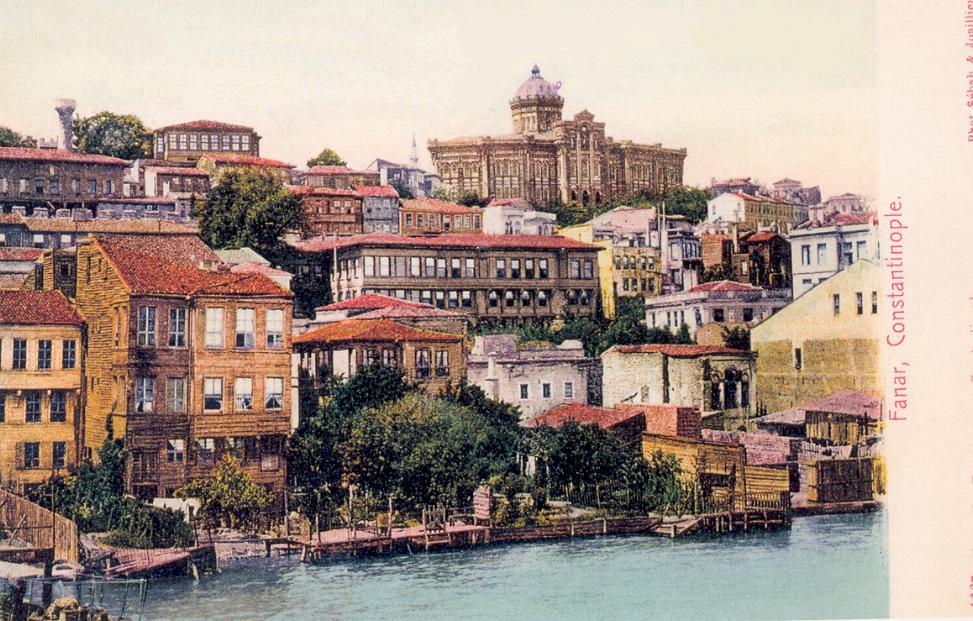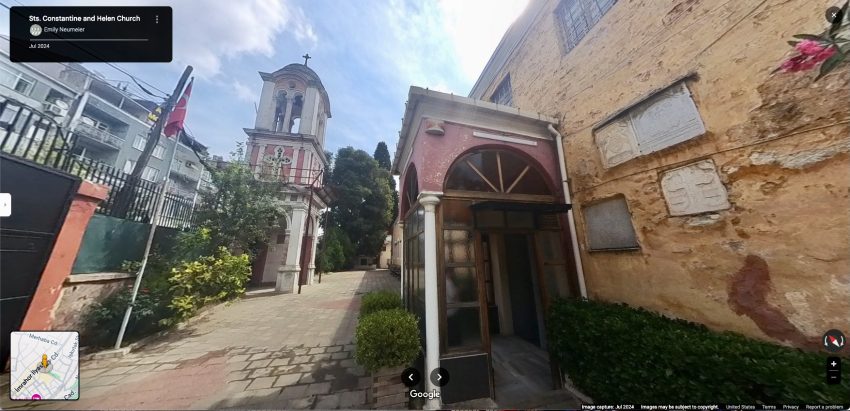By Emily Neumeier
A Hidden Legacy
In this post, I consider how 3D visualization technologies can contribute to our fundamental understanding of a vast corpus of monuments that remain overlooked in the field of architectural history—and that is the 30+ Greek Orthodox churches found in Istanbul’s historic peninsula. While the plots of these sites ultimately date back to the Byzantine period, most of the architecture that one sees on the ground today is of much more recent construction. These churches were built mainly in the nineteenth century, when Istanbul served as the bustling cosmopolitan capital of the Ottoman Empire. And although these sacred spaces continue to be maintained by the Greek Orthodox communities as active sites of worship, they remain largely absent in the urban histories of Istanbul—all while former Byzantine churches such as Hagia Sophia are now world-famous cultural heritage monuments.

The Istanpolis Research Collaborative
This past summer, I was a member of a research team that visited many of these sites. Our fieldwork is part of the the Istanpolis Research Collaborative, a project supported by a grant from the National Endowment of the Humanities (NEH) to examine the social and economic history of Greek Orthodox Christians living in the 19th and early 20th-century Ottoman Empire, just before the large-scale emigration of these communities to the Americas and elsewhere.
A key aspect of our work has been documenting these structures with 360° cameras, which we have used to create a series of three-dimensional views capturing both the interior and exterior of each site. Before our trip, I collaborated with my colleagues in the Duckworth Scholars Studio here at Temple not only to evaluate which tools would be best suited for this documentation project but also to borrow the necessary equipment (an Insta360 X3 camera) for our fieldwork. And I should note that the ability to rent media equipment is not exclusive to faculty, but is a resource available to all university students and staff.
After receiving permission from the Ecumenical Patriarchate of Constantinople, who oversees the care of the sites, we have now made these 360° views publicly available via Street View in Google Maps—comprising an immersive, open archive for spaces that in most cases have never been imaged in this way. Throughout the rest of this essay, you can find a selection of these 360° views: directly click on an image below to explore each site in detail in Google Street View.


360° views of the Balatkapı Taksiarches Church (left) and Topkapı Agios Nikolaos Church (right) in Istanbul. Google Street View.
Reevaluating Architectural History through 3D Technologies
In documenting these sites, one point that became abundantly clear is the ubiquity of the construction and interior design elements from building to building—in other words, these churches look very similar to one another. The majority of the interiors we visited feature elaborately gilded and carved furniture, with a special focus on the iconostasis and pulpit, and airy wooden roofs supported by slender columns. The resemblance from one site to the next suggests that these interiors were all built around the same time, and a survey of foundation inscriptions within these structures reveals that almost all of them were reconstructed in the first half of the 1830s, i.e., about a decade after the Greek War of Independence, which began in 1821.1
It was at this point in the early 1800s when the churches must have suffered various levels of destruction, amid the political unrest of the time. This finding was surprising because the traditional histories of these sites typically emphasize their original foundations in the Byzantine period. The fact that these churches in many ways could be considered more modern, 19th-century constructions is not immediately obvious from looking at more conventional architectural renderings like a ground plan. Such design details only become clear when immersed in the 3D built environments of the spaces—either in person or virtually via Google Street View. Therefore, undertaking a comparative survey of the architecture of these monuments leads us to reconsider how this specific window of time in the long 19th century saw a dramatic transformation in Istanbul’s urban fabric. For it was at this moment of significant political turbulence that Greek Orthodox communities evidently experienced devastating loss and then a remarkably swift resurgence.



360° views of the main lecture salon (left) and a science classroom (right) at the Greek Orthodox College. Google Street View.
A Thriving Community
Documenting the sites of the Greek Orthodox Communities in Istanbul’s historic peninsula is an important initiative because most of these spaces are not open to the general public. Hidden from the streetscape behind tall enclosure walls, many sites we visited are unknown to most of Istanbul’s residents, even those who grew up in the same neighborhood. The question of accessibility to these sites points both to the shrinking population and security concerns of the Greek Orthodox minority, who in the 20th century faced population exchange between Greece and Turkey (1924), anti-Greek pogroms (1955), and forced migrations (1964).
Our project highlights not only the congregational churches of these communities, but other types of spaces like schools, cemeteries, and sacred springs that serve as pilgrimage sites. One fascinating example is the Greek Orthodox College (Μεγάλη του Γένους Σχολή, Fener Rum Ortodoks Lisesi) located in the Fener neighborhood of Istanbul. Today, it remains one of the community’s few surviving secondary schools that offers instruction in Greek.2 Like the churches discussed above, the institution of the college itself dates back centuries, originally established in 1454 directly after the Ottoman conquest of Istanbul. But the tall red brick structure—made even taller by its prominent dome—that we see today dates to 1881, when several patrons funded the construction of a new campus for the school.
The imposing building designed by the architect Konstantinos Dimadis in an eclectic style looks not only to the Hellenic tradition, with the main lecture salon featuring wall paintings of Greek Orthodox saints and scenes from ancient Greece, but also to modern education systems, exemplified by the upper floors comprising science classrooms and even an astronomical observatory in the school’s central dome.3 Sites like the Greek Orthodox College stand as a testament to these thriving communities in Istanbul in the long 19th century.


360° views of the Edirnekapı Greek Orthodox Cemetery (left) and the sacred spring at the Balıklı Meryem Ana Monastery (right) in Istanbul. Google Street View.
Looking Ahead
The 360° views created by the Istanpolis research group allow for people around the world to learn about these extraordinary monuments, as well as offer a potential pathway for members of these Greek Orthodox communities to preserve and commemorate their heritage. This summer, we hope to continue our work of documenting sites in Istanbul. In the next phase of our project, our plan is to move to the cosmopolitan neighborhoods of Pera and Beyoğlu on the European side of the Bosphorus, which are also famous hubs for the non-Muslim communities who have called the city home.
Notes
- Zafer Karaca, İstanbul’da Tanzimat Öncesi Rum Ortodoks Kiliseleri (Istanbul: Yapı Kredi Press, 2008). ↩︎
- Lara Oge, “Phanar / Fener / Φανάρι,” Istanpolis, https://www.istanpolis.org/post/fener ↩︎
- Ryan Mitchell, “The Architecture of Instruction In Late Ottoman Istanbul,” presentation sponsored by the Philadelphia Chapter Society of Architectural Historians, Philadelphia, December 4, 2024. ↩︎
